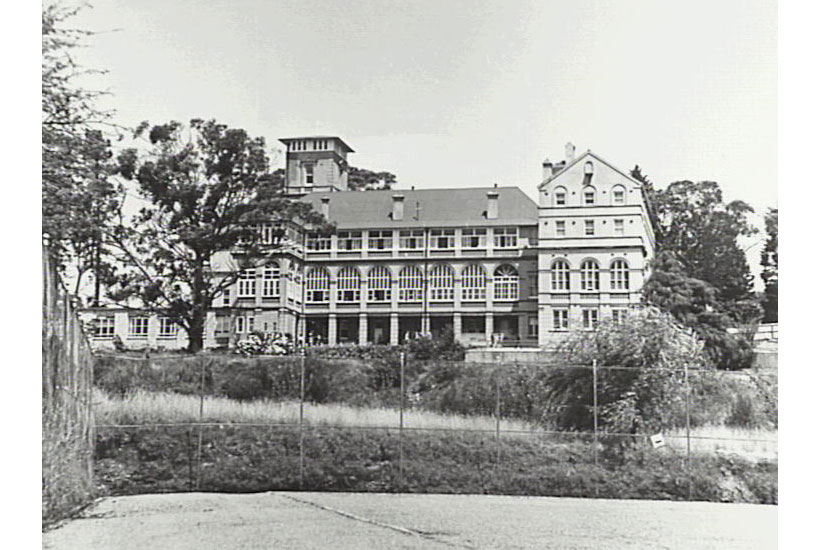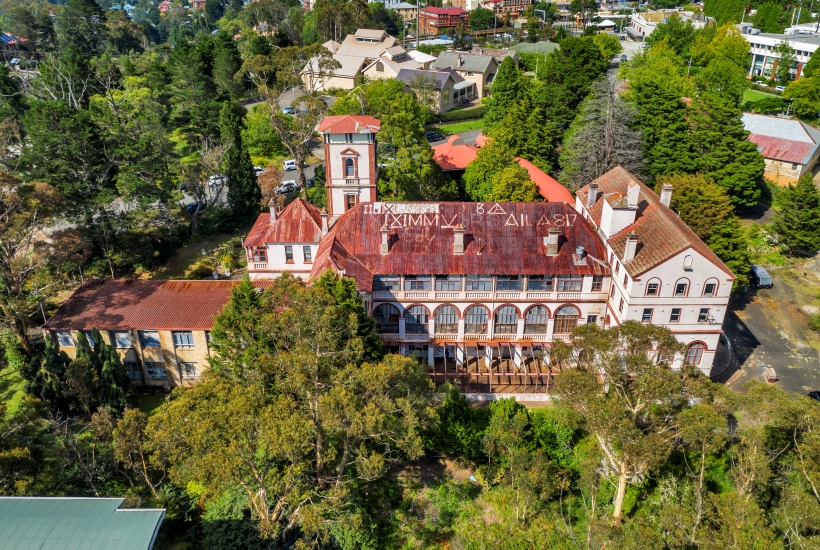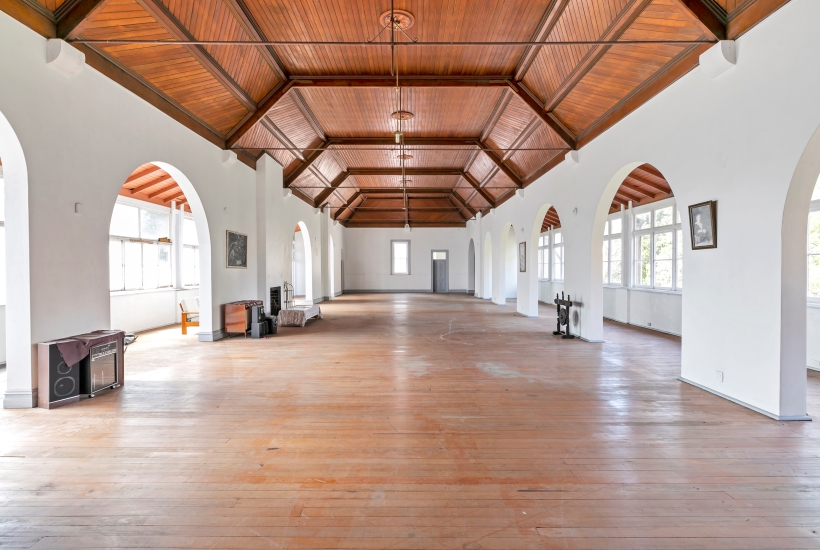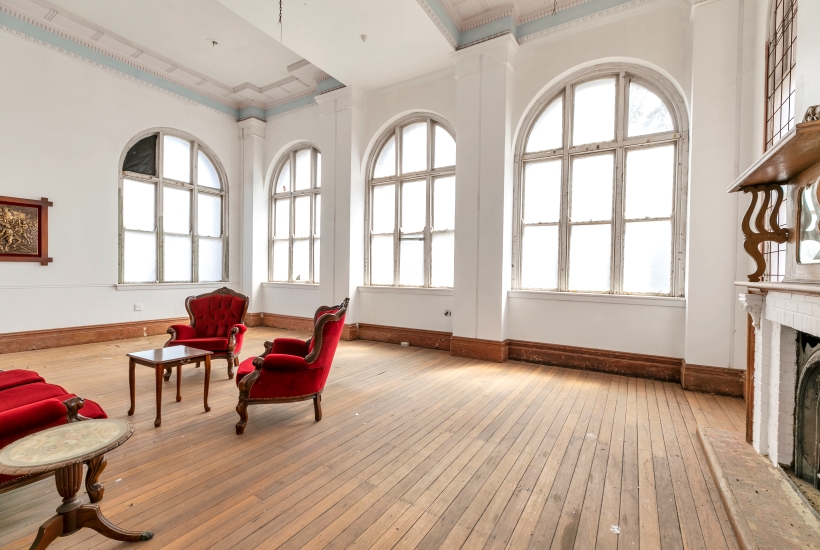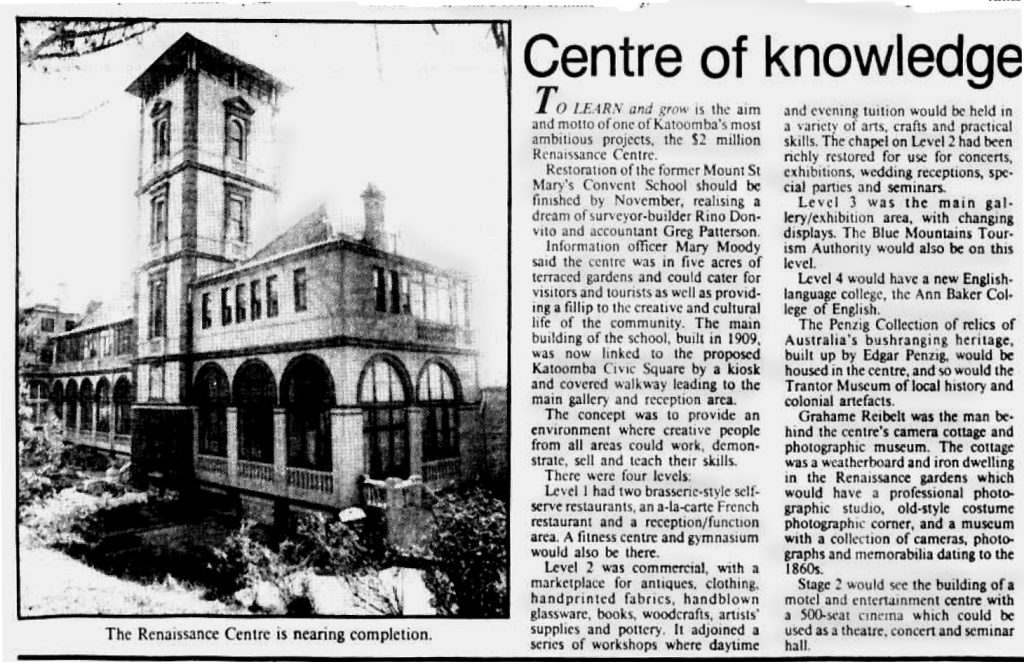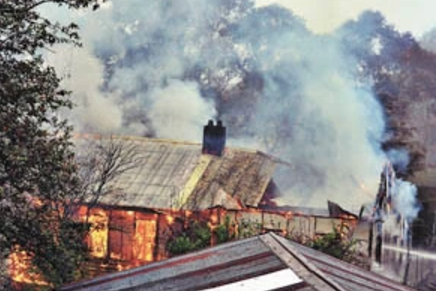The school was founded by the Sisters of Charity in 1901 in Main Street Katoomba. In 1910 Mt St Marys moved to a much larger and purpose built building at the Eastern Gateway to Katoomba.From 1910 until 1966 Mt St Mary’s was a strictly all girl boarding and day school.
VIDEO: https://www.facebook.com/AskRozBlueMountains/posts/2292496750793732
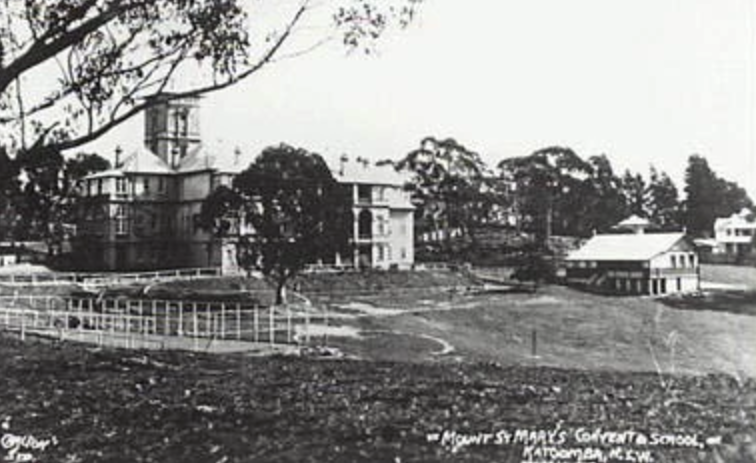
The front entrance to the school was from The Great Western Highway via a sweeping driveway up to the School and Chapel steps and a side entrance via Station Street. A well planned and well maintained garden with a Grotto and Fountain were features of the front entrance. A large oval, an orchard, a basketball court and tennis courts also formed part of the school property.
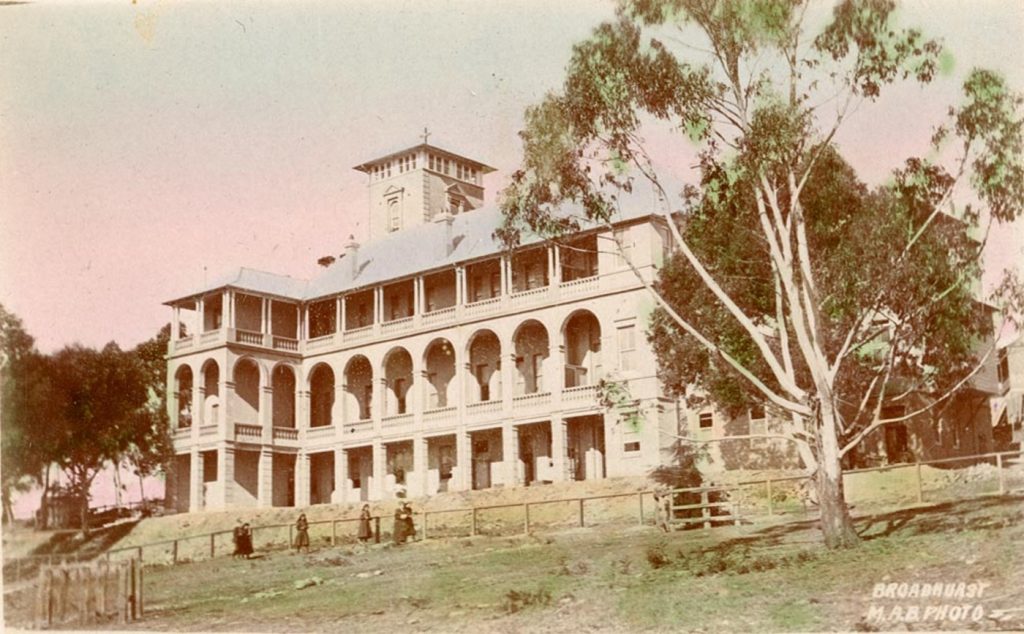
For many years the school offered Intermediate (Third Year) and Leaving Certificate (Fifth Year) courses. The introduction of the Wyndham Scheme (educational reforms) in the early 1960’s saw Mt St Marys offering the new School Certificate course as the highest level of education at the school. 1966 saw the last Intermediate Exam and the first School Certifcate Exam held. 1966 also saw the constuction and completion of a new Science Block. Other, more local and immediate changes were also taking place.
At the end of the 1966 school year, despite the efforts of the then Principal Bro Leo and the families of the boys, St Bernard’s College closed down. In order to accommodate those boys who did not transfer to De La Salle Lithgow, other Catholic boarding schools or Katoomba High School, Mt St Mary’s went co-educational in 1967. Mt St Marys closed in 1974. It was briefly used after that firstly as a Catholic Youth Centre of some sort and then as The Renaissance Centre but the old school has sadly fallen into disrepair.
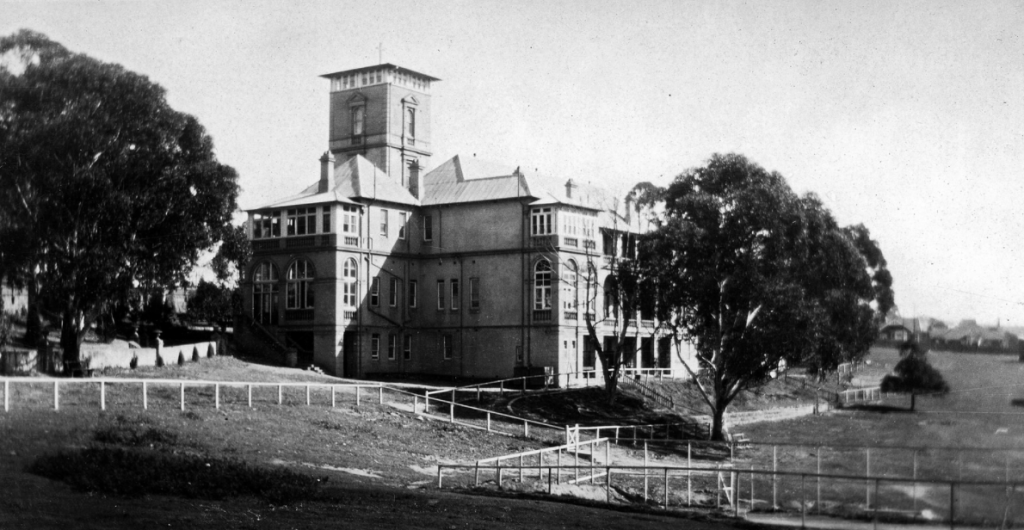
It was on the feast of St. Francis Xavier in 1900 that the Sisters of Charity first arrived in Katoomba. Moving into a former guesthouse in Katoomba Street, they converted it into a convent and opened the first Catholic school on the Mountains.
In those early years nuns were a novel sight in Katoomba. Vaguely outlined in the mountain mist, their sudden appearance set many a horse and driver on edge. But their place in the community of the mountain town was soon established and pupils, day and boarding, eventually grew beyond the capacity of their small cottage. To alleviate the problem, the neighbouring house was purchased to house the boarders and the two cottages joined by a covered passage. Within a few years this arrangement, too, proved inadequate. The rapid growth of the school convinced the Church authorities that a completely new site was warranted.
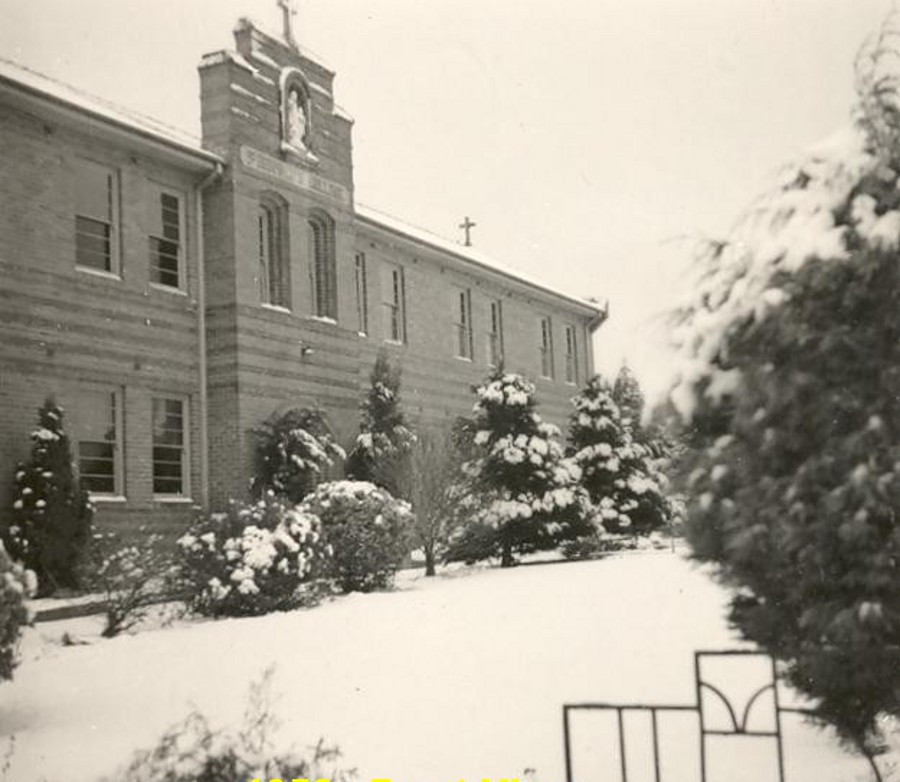
St Bernards in 1954
A large block of land on the Bathurst Road, within a short walk from the railway station, was chosen and Cardinal Moran, Archbishop of Sydney, laid the foundation stone on 17 April 1909. With its exalted tower and spacious verandahs, the handsome stone building of the new Mount St. Mary’s Ladies’ College and Convent commanded extensive views of the surrounding area. By 1911 its ten acres of grounds boasted “courts for basketball and tennis, flower garden and orchard walks, as well as many grassed acres immediately surrounding the Convent building, where the children daily exercise themselves in many suitable games”.
Within a short time, too, its growing academic reputation, coupled with its climatically attractive environment, began to attract students from interstate and as far afield as the Pacific Islands. It was soon a Katoomba landmark and model of Catholic education.
While, initially, instruction spanned the years from Kindergarten to Matriculation, in 1941 the Primary section was removed to a new school built behind the parish church of St. Canice’s. Besides preparation for tertiary studies the College offered both a Commercial option which included typing and shorthand and, for many years, a “Finishing High-Class” devoted to the development of “accomplishments” such as Art, Music and Handicrafts.
“Youth”, suggested an early College prospectus, “is the most impressionable time of life…. Only in a well-managed Ladies’ College can all the best influences be fully and regularly brought to bear on a girl’s life”. The Sisters at Mount St. Mary’s aimed to secure for each girl “a thorough education and the development and formation of a sufficiently strong and upright character.. .in order that she may be able to fill her place in good society and go through life happily and successfully”. Such ideals were pursued for over half a century until, at the end of 1974, the College closed its doors.
Subsequent years were ones of slow deterioration when the College halls witnessed only the work of vandals and the quiet, sad restlessness of the ‘ghostly nun’ who wandered the upper dormitory.
In 1984 it was sold to a developer and in 1987 reopened as the Renaissance Centre with specialty shops and tourist related use. By the 1990s it was derelict and despite a number of, often controversial, development plans, is currently unoccupied. It was listed on the State Heritage Register in 2003.

The TUNNEL
There are many stories circulating even today about this tunnel from Mt St Mary’s to Katoomba railway and it comes up in conversations with old residents. If you believe all you hear then it must be like an underground ants nest with many galleries. I have made some enquiries from a few of the old residents and I hit the jackpot one day so this is what and where this tunnel was.
As the Edge Theatre now sits on the site the landscape has changed and the playing field was where the tunnel started or in that vicinity and was driven due east to emerge on the Sydney side of the railway line. The old resident whom I spoke to and have known for years tells me that the eastern portal is now a feature in a house on the eastern side of the railway. This fellow only found out because at one time he was looking for a house to purchase. When he actually saw the inside of the house the portal was all bricked up and was probably filled in behind. From the playing field to the eastern side is not a great distance so it would not be that long, but the purpose and size is unknown or when it was built still remains a mystery. Mysteries are always enchanting.
Could it have been an air-raid shelter?
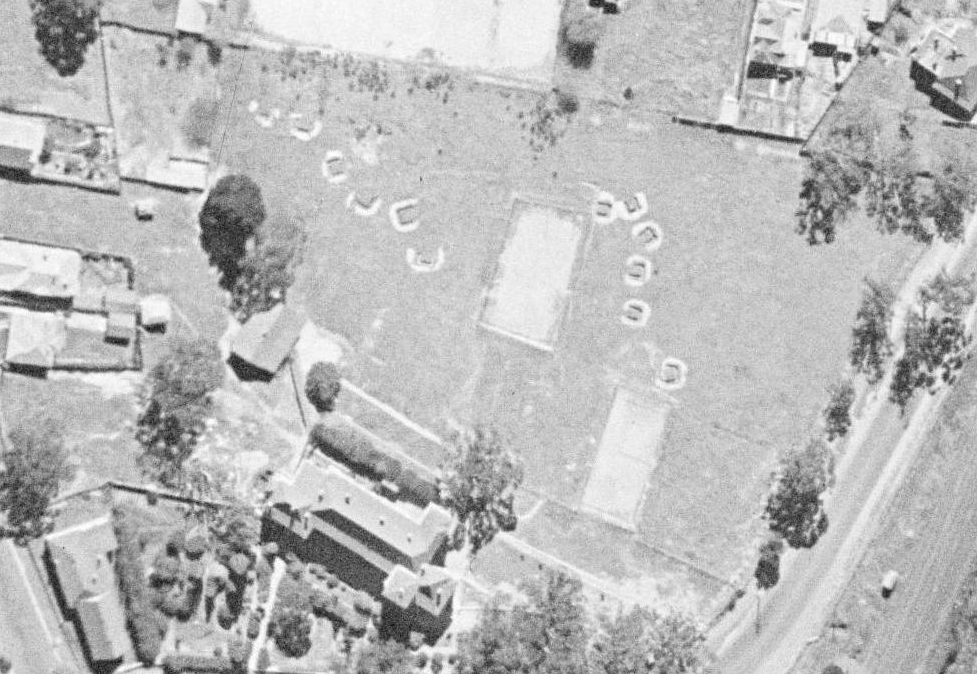
Mount St. Mary’s Convent in 1943
Mount St. Mary’s – TIME LINE

![]()


